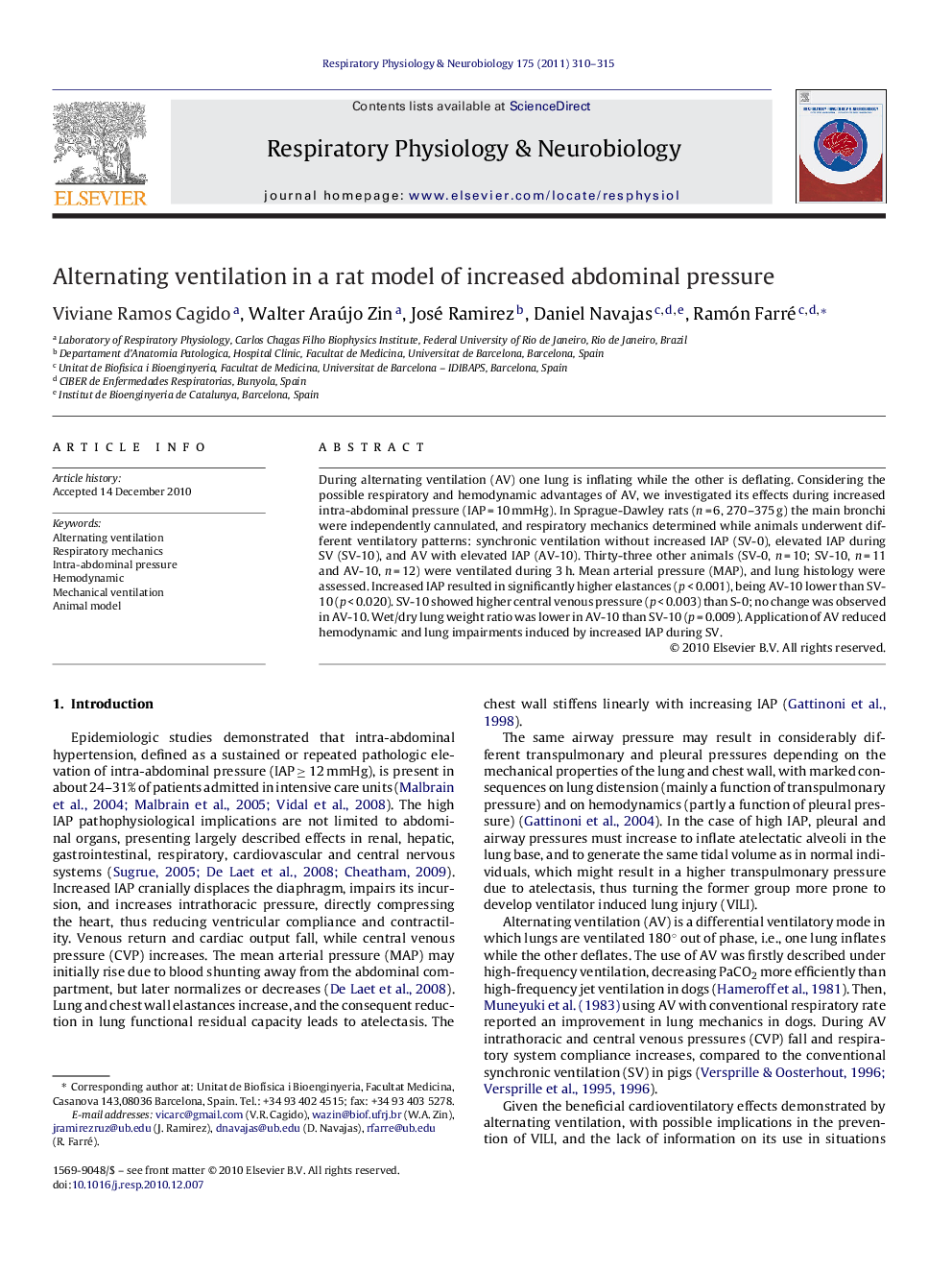| Article ID | Journal | Published Year | Pages | File Type |
|---|---|---|---|---|
| 5926504 | Respiratory Physiology & Neurobiology | 2011 | 6 Pages |
During alternating ventilation (AV) one lung is inflating while the other is deflating. Considering the possible respiratory and hemodynamic advantages of AV, we investigated its effects during increased intra-abdominal pressure (IAP = 10 mmHg). In Sprague-Dawley rats (n = 6, 270-375 g) the main bronchi were independently cannulated, and respiratory mechanics determined while animals underwent different ventilatory patterns: synchronic ventilation without increased IAP (SV-0), elevated IAP during SV (SV-10), and AV with elevated IAP (AV-10). Thirty-three other animals (SV-0, n = 10; SV-10, n = 11 and AV-10, n = 12) were ventilated during 3 h. Mean arterial pressure (MAP), and lung histology were assessed. Increased IAP resulted in significantly higher elastances (p < 0.001), being AV-10 lower than SV-10 (p < 0.020). SV-10 showed higher central venous pressure (p < 0.003) than S-0; no change was observed in AV-10. Wet/dry lung weight ratio was lower in AV-10 than SV-10 (p = 0.009). Application of AV reduced hemodynamic and lung impairments induced by increased IAP during SV.
